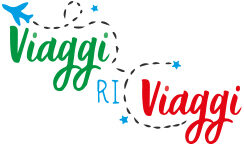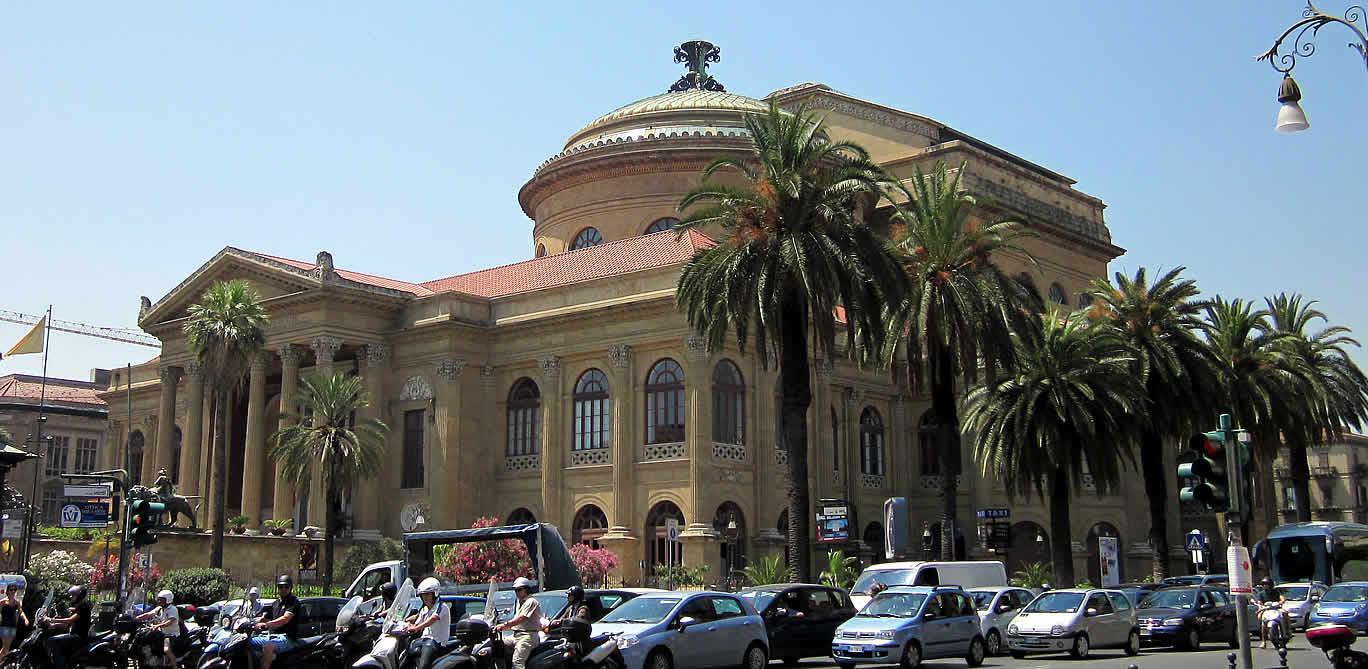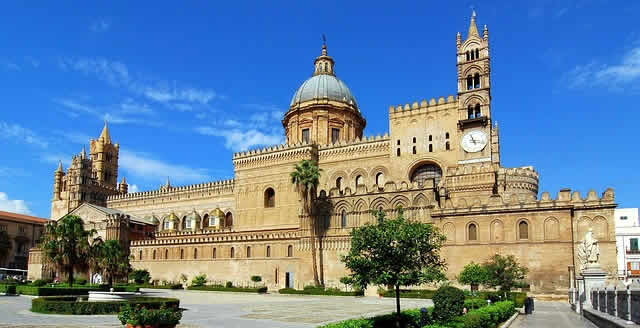
Palermo, the capital of Sicily, is a city with a millenary history and an extraordinary cultural heritage. Here are some highlights of its history:
- Prehistoric and Phoenician Origins:
- Human presence in Palermo dates back to prehistoric times, with graffiti and rock paintings found in the Addaura caves. These signs date back to approximately 35,000-8,000 years ago and may represent magical rituals or dances.
- The Phoenicians founded the city under the name Zyz (which means “flower” in Phoenician). This name may derive from the city’s shape, cut by two rivers, resembling a flower. Coins from the Punic period found in Palermo often bore the inscription Zyz, indicating that the city likely had its own mint.
- Later, the Greeks called the city Panormos (from the Greek παν-όρμος, meaning “all-port”) due to the two rivers surrounding the city, creating a vast natural harbor.
- Roman Period and Punic Wars:
- The city remained under Phoenician control until the First Punic War (264-241 BCE), when it was conquered by the Romans. Palermo was at the center of one of the major conflicts between Carthaginians and Romans.
- During the Roman period, Palermo was part of the province of Syracuse.
- Byzantine and Arab-Norman Periods:
- In the 8th century, the city came under Byzantine rule.
- In the 9th century, the Arabs conquered Sicily, and Palermo became an important cultural and commercial center.
- In the 12th century, the Normans, led by Roger I, reconquered the city and transformed it into a crossroads of cultures, religions, and architectural styles.
- During the Arab-Norman period, masterpieces such as the Palermo Cathedral, the Palazzo dei Normanni, and the Church of San Giovanni degli Eremiti were built.
- Spanish and Baroque Period:
- In the 15th-17th centuries, Palermo was under Spanish rule and experienced a period of great artistic and architectural splendor.
- The Church of Santa Maria dell’Ammiraglio (or Martorana) and the Pretoria Fountain are examples of this period.
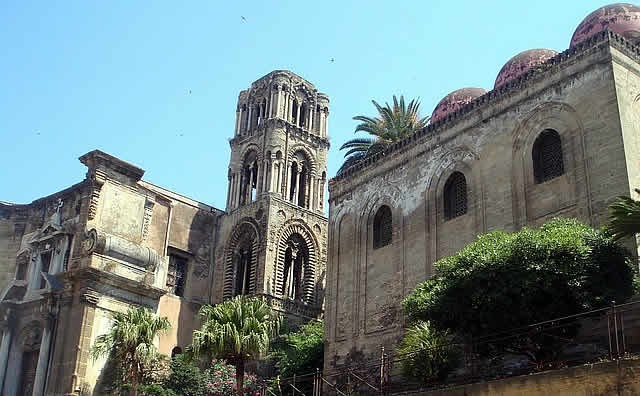
- Contemporary Era:
- In the 19th century, Palermo was involved in the Risorgimento movements and became an important political and cultural center.
- In the 20th century, the city experienced periods of growth and change, but also faced difficulties related to the mafia and World War II.
Palermo is a city rich in history, art, architecture, and traditions, offering visitors a journey through time along its streets and monuments.
Monuments to visit in Palermo
- Palazzo dei Normanni: This palace, also known as the Royal Palace of Palermo, is one of the most visited monuments. Built to accommodate Arab emirs, it was later occupied by the Normans and the Spaniards. Today, it serves as the seat of the Sicilian Regional Assembly.
- Palermo Cathedral: This magnificent building with its unique architecture is a true melting pot of styles. It is located near the Palazzo dei Normanni and is worth a visit both inside and outside
- Quattro Canti (Four Corners): The intersection of Quattro Canti marks the meeting point of Palermo’s two main streets. The four facades are built in the same model: at the base, a fountain representing the seasons; at the first level, statues of the kings of Palermo; and at the top level, representations of the city’s four patron saints.
- Catacombe dei Cappuccini (Capuchin Catacombs): These catacombs are a unique and evocative place. They contain thousands of mummies and skeletons, offering a glimpse into Palermo’s history and funeral traditions.
- Fontana Pretoria (Pretoria Fountain): Located in the square of the same name, the Fontana Pretoria is a Renaissance masterpiece with numerous statues and mythological figures.
- Chiesa della Martorana (Church of Santa Maria dell’Ammiraglio): This Byzantine church is famous for its golden mosaics and its red dome. It is a place of great spirituality and artistic beauty.
- Orto Botanico (Botanical Garden) and Villa Giulia: The Orto Botanico in Palermo is a green oasis in the heart of the city, with a vast collection of exotic plants. Villa Giulia, located within the garden, is an elegant neoclassical building.
These monuments represent only a small part of Palermo’s beauty. The city also offers a lively nightlife, historic markets, culinary delights, and much more. Enjoy your journey of discovery in this fascinating city!
Theaters to visit in Palermo
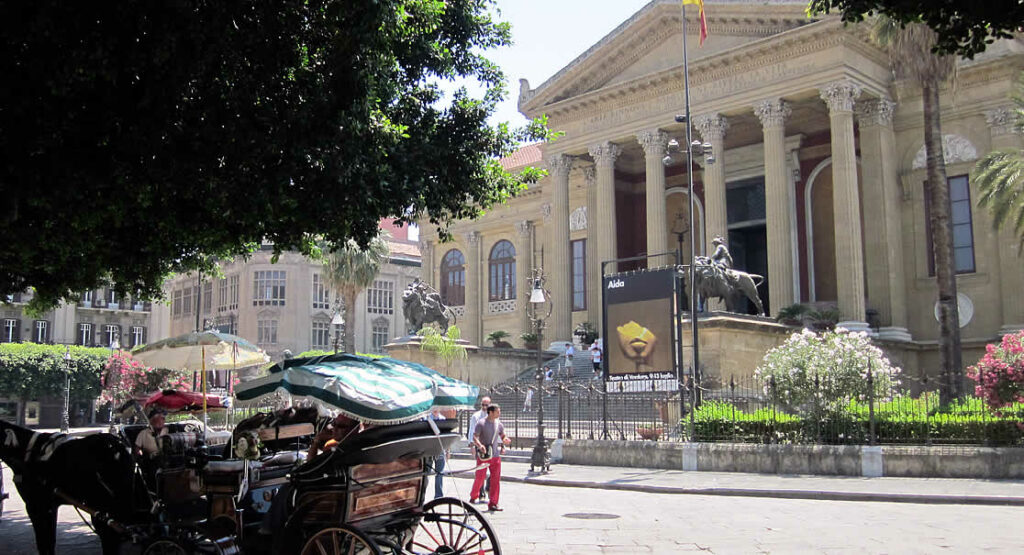
- Teatro Massimo Vittorio Emanuele: It is the largest opera house in Italy and the third largest in Europe. Its imposing neoclassical facade and the beauty of the grand hall and the Liberty-style boxes make it an important international cultural hub. Inaugurated in 1897, it was the largest Italian opera house and the third largest in Europe. It is a place of great architectural beauty and offers high-quality performances.
- Teatro Politeama Garibaldi: Designed by architect Giuseppe Damiani Almejda, it is an impressive building in Pompeian style located in Piazza Ruggero Settimo, one of the most beautiful and lively squares in the city.
- Teatro Biondo: Located on Via Roma, it is the most recent of Palermo’s historic theaters, built in 1903.
- Teatro Ditirammu: This theater of Sicilian popular tradition is located in the historic center of Palermo and is renowned for its performances with pupi, traditional marionettes.
- Teatro di Verdura: It is a summer theater located in the Favorita Park of Palermo. It is used during the summer for performances by the Teatro Massimo.
Each theater has its own history and unique atmosphere, so I recommend exploring them all to discover the different nuances of Palermo’s theatrical scene.
Province of Palermo
The Province of Palermo, now known as the Metropolitan City of Palermo, comprises a total of 82 municipalities. Located on the island of Sicily, this vast metropolitan area covers an area of 5009.28 km² and is home to a population of approximately 1,200,957 inhabitants. The province offers a variety of landscapes and cultural attractions, making it an interesting destination to explore.
Here are some of the towns and places not to miss in the Province of Palermo:
- Monreale:
- Located just a few kilometers from Palermo, Monreale is famous for its Cathedral, one of the largest examples of Norman architecture in Sicily. The interior of the Cathedral is adorned with splendid Byzantine mosaics.
- Cefalù:
- This charming coastal town is renowned for its white sandy beach, medieval old town, and the Cathedral of Cefalù. Cobblestone streets and panoramic views make Cefalù a must-visit.
- Bagheria:
- Known as the “city of villas,” Bagheria is famous for its Baroque and Neoclassical villas. Here, you can admire the architecture and immerse yourself in local history.
- Parco delle Madonie (Madonie Park):
- The Madonie Mountains are located in the northern part of Sicily. This mountain range offers spectacular landscapes, lush forests, and a rich variety of fauna and flora. The protected natural area provides opportunities for outdoor activities such as hiking, trekking, and birdwatching.
- Sambuca di Sicilia:
- This medieval village offers breathtaking views of the surrounding hills. It is an authentic and tranquil place, perfect for a getaway from the city.
Each town tells a different story and offers unique experiences, including local cuisine, traditions, and warm hospitality. Enjoy your journey of discovery in the Province of Palermo!
